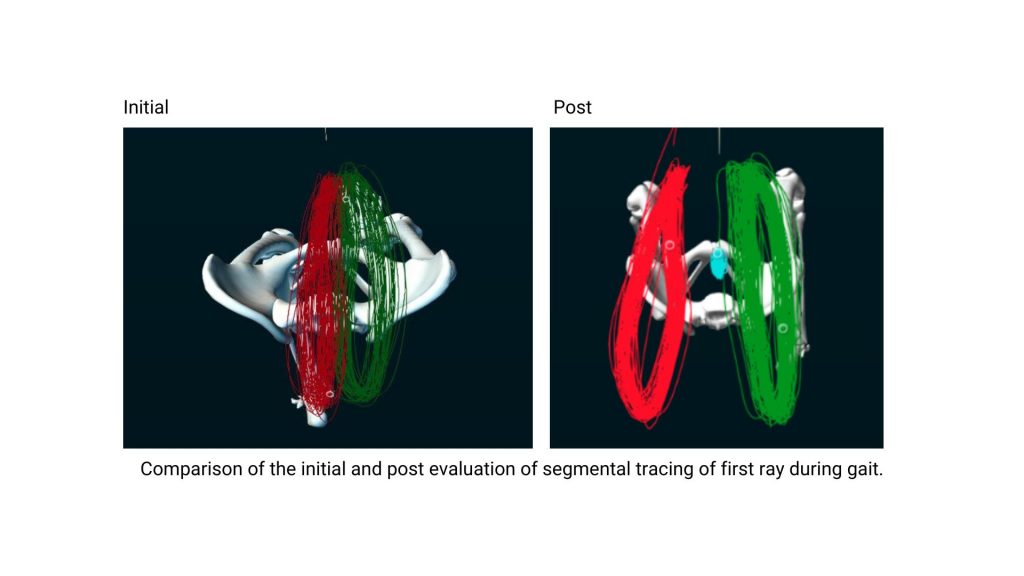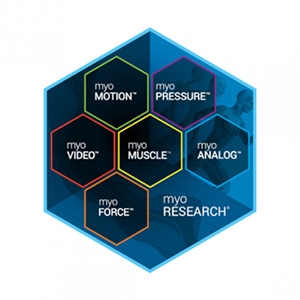Subject’s age: 20
Subject’s gender: Male
Background: This patient was a collegiate running back that had an ACL reconstruction and revision.
Noraxon hardware used: Ultium Motion & myoRESEARCH
Reason for visit: Coaches and athletic trainers noticed slight deviations in his running gait and agility, as well as what appeared to be some apprehension when changing direction. The team physical therapist suggested a gait analysis to quantify the deviations in order to form a treatment plan.
Initial Assessment Findings: Walking on a treadmill, asymmetry was noted with increased right hip abduction and relatively narrow base of support as noted by the more medial position of the left leg during right stance. This was demonstrated by segmental tracing of the first metatarsal on each foot.
Kinematic data suggested increased right hip abduction as well as decreased right ankle dorsiflexion during the stance and swing phases, generally remaining below neutral.
Key Findings: These findings suggest a circumduction gait during right swing to compensate for a lack of ankle dorsiflexion. During stance on the right, the narrow base of support was likely an attempt to maintain a level pelvis by keeping the left swing limb closer to the midline. We theorized that multiple knee surgeries affected the proximal tibiofibular joint, limiting upward mobility of the fibula and thus reducing ankle dorsiflexion range of motion. The athlete developed a frontal plane asymmetry with right leg circumduction and relative adducted position of the left swing leg.
Treatment summary: In response to the dorsiflexion deficit, a daily routine of joint mobilization and the application of rigid taping to the proximal tibiofibular joint was initiated. Concurrently, to tackle frontal plane asymmetry, lateral drills, including shuffling and plyometric hops, were integrated into the treatment plan.

Key Improvements Shown in Comparison Report: 2 month follow up assessment: As demonstrated by the segmental tracing, the frontal asymmetry improved with more symmetrical profiles of the swing phases as well as an increase in step width. Dorsiflexion range of motion remained below normal on the right.
Assessment & Training Outcomes: The athlete returned to full sport participation for his 2nd football season and set a record for 2nd most rushing yards in a single season before.
Products








